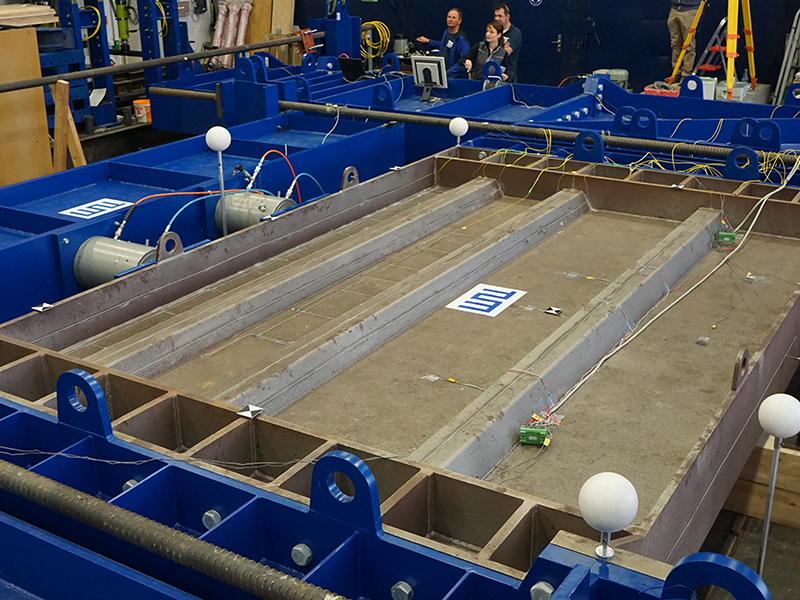New 50-tonne test rig for steel bridge components
Bending The Rules

More than 2000 bridges throughout Germany are going to need rebuilding or restoration work over the next few years. At a probable cost of billions of Euros.
Many of those bridges that need completely rebuilding will be replaced with steel constructions, which tend to be longer lasting, and easier to inspect and maintain than the older reinforced concrete structures. "Given the enormous expense involved in steel bridge-building, it’s always worth saving money wherever possible", says Professor Martin Mensinger, Chair of Metal Structures at TUM, "for example, by optimizing the use of materials."
To make a bridge as lightweight as possible, yet as stable as necessary, engineers need very precise data on what kind of forces the bridge components are able to withstand. However, "It’s not at all easy to establish the stress limits in a test situation," Professor Mensinger explains. "Steel bridge components are several meters long and very, very heavy, so there are very obvious technical limitations."
Steel under pressure
On behalf of the Autobahndirektion Nordbayern, Professor Mensinger and his team have developed the first test station which allows full-size reinforced bridge components to be stress-tested in two different directions at the same time. This means they’re exposed to the same forces that occur during construction.
At the construction site, each bridge component – measuring several meters in length – is welded to the previous one and the whole is gradually eased forward – out into mid-air. This means that the bridge segment under construction bears the entire weight, supported by one single bridge abutment – until the construction reaches the next pier. This is the point of maximum strain. Once the bridge is built, the individual components are subject to much lesser stresses.
Testing boundaries
The new testing station, a leviathan that weighs 50 tonnes and needs a whole laboratory to itself, can simulate these extreme stresses that bridge elements undergo during erection. There are two forces at play here: the components are compressed end to end at the same time as being vertically squeezed. Engineers call this bi-axial stress. The massive steel segments are subjected to gradually increasing pressure with the help of hydraulic presses – until, with a clearly audible crack, the integrity of the material gives way and the steel bends and deforms.
Sacrificed for science
Six lateral components for the new Oberthulba bridge of varying sizes were put through their paces in this way – sacrificed for science – by Professor Mensinger and his team. Nadine Meier is the engineer in charge of planning and execution of the stress tests. "The test results mean the structural engineers can now draw up more precise plans", she says, "and the parts can be calibrated to withstand the extreme pressures they are under during the construction phase."
The basis for structural calculations to date is Eurocode 3, Design of steel structures (DIN EN 1993-1-5). The rules it lays out for the computation of complex stresses have been the subject of controversy for some years now. A secure scientific basis is needed to update the code: "Currently we’re using computation methods that were developed for non-reinforced parts", says Maier. "This leads to inaccuracies which mean that the structural components are manufactured oversized. Thanks to our work with the test rig, the plans for the Thulba viaduct are the first to optimize material use."
Contact:
Technical University of Munich
M. Sc. Nadine Maier
Phone: + 49.89.289.23055
nadine.maier@tum.de
www.metallbau.bgu.tum.de